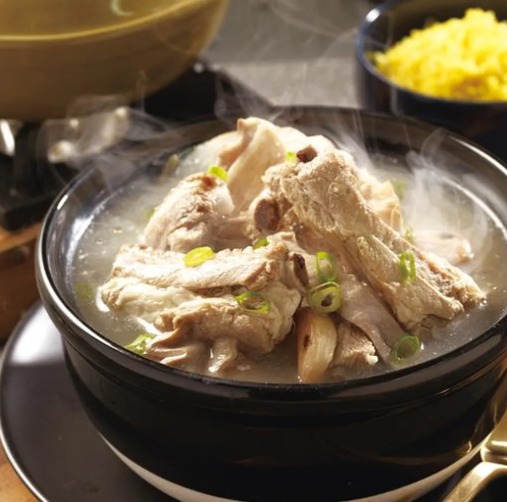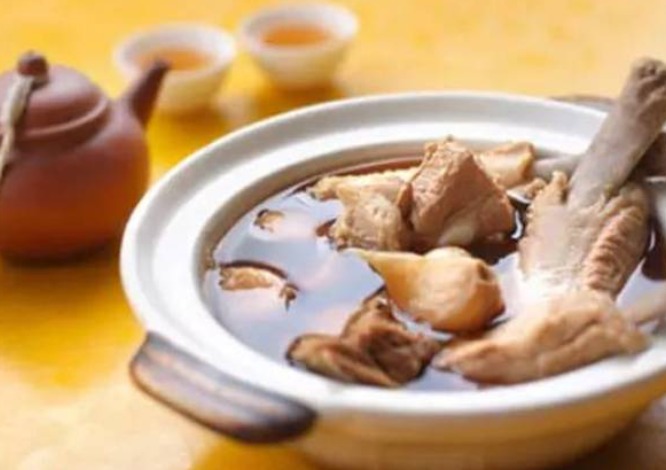Bak Kut Teh, Singapore’s iconic herbal pork rib soup, is more than just a dish. it’s a culinary narrative of migration, adaptation, and cultural fusion. With its aromatic broth and tender meat, it has captivated palates for generations, becoming a cornerstone of the city state’s gastronomic identity. Whether served in a humble hawker stall or a modern restaurant, the scent of simmering Bak Kut Teh evokes nostalgia, weaving together history, tradition, and the unmistakable essence of Singapore.

From Humble Origins: A Medicinal Labourer’s Meal
The story of Bak Kut Teh begins in the late 19th and early 20th centuries, when waves of Chinese migrants from Fujian and Guangdong arrived in Singapore and Malaya to work as coolies in ports, mines, and rubber plantations. The backbreaking labour and humid climate left many suffering from rheumatism and fatigue, prompting them to turn to traditional Chinese medicinal soups for relief.
Originally a simple, nourishing broth made from cheap pork ribs and bones, the dish was fortified with herbs like dang gui (angelica root), chuan xiong (Ligusticum), and goji berries ingredients believed to dispel dampness and strengthen the body. Over time, this workers’ remedy evolved into a beloved street food, with dedicated stalls appearing in Singapore’s Chinatown by the 1920s.
Interestingly, Singapore’s version of Bak Kut Teh differs from Malaysia’s: the former is lighter in colour, dominated by the sharp warmth of white pepper, while the latter is darker and sweeter due to the liberal use of soy sauce. This divergence reflects the adaptability of migrant communities—Singapore’s iteration prioritised therapeutic warmth, while Malaysia’s leaned towards heartier sustenance.
The Alchemy of Spices: Decoding the Perfect Broth
A well-made Bak Kut Teh broth is a masterclass in balance. The liquid, golden and glistening with rendered marrow, delivers an orchestrated sequence of flavours: the initial peppery punch, followed by the earthy depth of garlic and the subtle sweetness of cinnamon, finishing with the faint bitterness of medicinal herbs.
Traditional recipes call for pork ribs preferably meaty cuts like spare ribs or belly blanched to remove impurities before being simmered for hours with a secret blend of spices. The key lies in the spice mix: white pepper and garlic are non-negotiable, but master chefs often add star anise, cloves, fennel, and cassia bark, with some establishments incorporating ginseng or Solomon’s seal for extra complexity.
The dish is typically served with youtiao (fried dough sticks) for dipping and a pot of strong Chinese tea to cut through the richness a ritual that enhances the experience.

A Symbol of Identity: From Street Food to National Icon
Beyond its culinary appeal, Bak Kut Teh embodies Singapore’s multicultural ethos. After independence in 1965, the young nation sought unifying cultural symbols, and food particularly dishes that blended traditions became a powerful tool. Bak Kut Teh, with its Chinese medicinal roots and Malay Peninsula spice influences, perfectly encapsulated this hybrid identity.
By the 1980s, as Singapore positioned itself as a global hub, the dish transitioned from street fare to a cultural ambassador, featured in tourism campaigns and international food festivals. Today, legendary establishments like Founder Bak Kut Teh and Ng Ah Sio Pork Ribs Soup remain pilgrimage sites for locals and tourists alike, their walls adorned with photos of visiting celebrities a testament to the dish’s enduring legacy.
For the diaspora, the aroma of Bak Kut Teh is a visceral reminder of home, a thread connecting them to their heritage.
Tradition Meets Innovation: Bak Kut Teh in the Modern Era
In the 21st century, Bak Kut Teh has undergone creative reinterpretations. Chefs have introduced seafood versions, vegetarian adaptations, and even molecular gastronomy twists. The Michelin Guide’s recognition of Singaporean street food such as the famed “Liao Fan Hong Kong Soya Sauce Chicken Rice & Noodle” has further elevated the dish, drawing global attention to its humble origins.
Yet, purists remain devoted to time-honoured techniques, emphasising slow simmering and premium ingredients. This tension between innovation and tradition mirrors Singapore’s broader culinary landscape, where reverence for the past coexists with a drive for reinvention.
Conclusion: A Bowl of History
From labourers’ sustenance to a national treasure, Bak Kut Teh’s journey mirrors Singapore’s own transformation. Each spoonful carries the resilience of early migrants, the ingenuity of cultural exchange, and the warmth of shared memories.
So the next time you lift a steaming bowl of Bak Kut Teh, pause to savour not just its rich flavours, but the centuries of history simmered within.





Be the first to comment